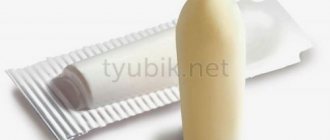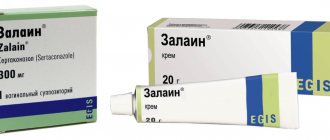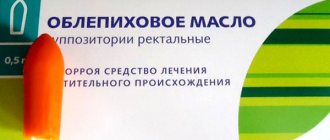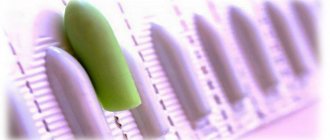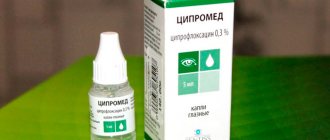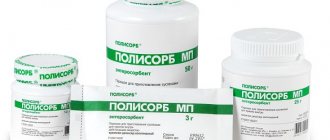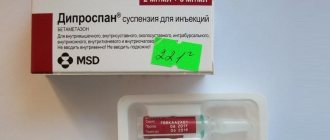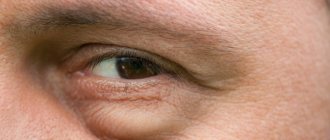Chlorhexidine is an antiseptic drug that is used to treat thrush and a variety of other women's diseases. The medicinal substance is considered not only safe, but also effective, as it has the ability to wash away harmful bacteria without disturbing the microflora of the female organs.
Although the drug is quite popular in the treatment of candidiasis, there are quite conflicting reviews about its use. The reason is that each organism has its own characteristics and reactions to certain substances. For this reason, for some patients, treatment with the drug brings untold benefits, while for others it is completely useless. Therefore, you should not resort to self-medication. Before using the medication, you should seek the advice of a qualified physician.
What is the drug
For thrush in women, it is recommended to use Chlorhexidine as an excipient . The drug itself is not an antifungal agent, and therefore does not affect the number of candida fungi in the female body. Chlorhexidine has antibacterial and antiseptic effects. Doctors often prescribe Chlorhexidine for prophylactic purposes not only for thrush, but also for other pathologies that arise due to the activity of microorganisms.
https://youtu.be/PSxL4Kj_Um0
General information about the drug
Chlorhexidine is probably known to all people as an effective antiseptic and bactericidal substance used for washing wounds and various skin lesions to prevent infection.
This product can quickly destroy many types of microorganisms , including gram-negative and gram-positive bacteria. The drug perfectly stops the development of parasitic fungi, and against Candida fungi that are natural to the body, it exhibits pronounced fungicidal activity.
Pharmacy chains usually sell Chlorhexidine digluconate , which is an aqueous solution of an antiseptic used for local disinfection and has a bactericidal effect. Therefore, timely treatment of skin lesions with this substance allows you to avoid possible infection with almost any type of infection.
In what dosage form is it better to use the drug?
Against thrush in women, Chlorhexidine is available in dosage forms such as spray, solution and suppositories, each of which has its own advantages:
- Suppositories are often used as an additional treatment for candidiasis. For the treatment of mild thrush, the drug shows remarkable results. Analogue suppositories, in which the main active ingredient is Chlorhexidine, are produced with the following names: “Hexicon”, “Chlorhexidine Gifrer”, “Plivasept” and many others;
- A spray containing an alcohol base (0.5%) with Chlorhexidine is rarely used to treat thrush. Most often it is used to treat pathologies caused by the activity of bacteria (various forms of tonsillitis);
- In solution form, Chlorhexidine is very popular. It is in this form that the drug is most often used. Using the solution, douching or washing is performed. Solutions may have different consistencies. There are solutions with a high concentration (20%), bigluconate (from 0.05 water-based), and a strong alcohol solution, which is used as an antiseptic.
Feedback from medical professionals and patients is mixed regarding the effectiveness of Chlorhexidine treatment for thrush. The effectiveness of the medicine in the treatment of thrush plays a role not only in the individuality of each specific case, but also in the frequency with which the medicine is used. If you treat this pathology using a solution in large volumes, you can thus provoke an allergic reaction.
It is very important to avoid contact of the drug with the eyes and blood. Also, it is important to consider that candidiasis during pregnancy is strictly prohibited from being treated using a solution. It is allowed to use only suppositories based on this substance. If this prohibition is ignored, serious consequences may arise. Treatment of thrush during thrush should only be carried out under the supervision of a qualified doctor.
Chloghexidine may have the following side effects:
- presence of itching in the genitals;
- burning and dryness in the perineum;
- tissue swelling and allergic reactions.
Douching with Chlorhexidine for candidiasis
Most often, Chlorhexidine solution for thrush in women is used for douching. The concentration of the drug, sold in almost every pharmacy, usually ranges from 0.05% to 20%, but the volume may vary. For douching, a concentration of 0.05% is required , and it is best to buy 500 ml bottles.
According to many gynecologists, there is no need to first dilute the substance with water, since it is completely ready for use, and dilution can reduce the therapeutic effect. But here it is important to take into account the individual characteristics of the body. If the concentration of the drug is too high for a particular woman, this can lead to the appearance of bacterial vaginosis, which will greatly complicate the overall disease. Of course, if a substance is purchased in a higher concentration, it should be diluted .
To douche with chlorhexidine for thrush, it is necessary:
- Wash yourself without using any products.
- Lie on your back and insert the tip of the bottle into the vagina.
- Press the Chlorhexidine bottle several times.
- After this, you should lie down for at least 15 minutes.
Douching should be done at least 2-3 times a day.
When pre-diluting the product, you need to use a syringe with a long plastic tip, which must be boiled after each use.
The douching solution should be warm. It is necessary to irrigate the mucous membranes without strong pressure, so you should press gently on the bottle or syringe. It is important to remain in a lying position for at least 10 - 15 minutes and not go to the toilet for at least an hour after douching.
Use of the drug
Chlorhexidine treats thrush when taken over a long period. If you prefer to use douching, you should know that such procedures must be carried out several times a day. While expecting a child, treatment must be comprehensive and systematic.
If treatment of candidiasis is carried out in the oral cavity, it is important to rinse your mouth for a certain period of time and the required number of times. Since this antiseptic substance has the ability to destroy the microflora of the oral cavity, in order to avoid negative consequences, you should strictly follow the recommendations of the doctor, who will offer the most effective treatment methods in a particular situation.
Mode of application
Douching is carried out according to the following scheme:
- The tip and syringe must be boiled before the procedure.
- Lie down and elevate your legs.
- Carefully insert the tip into the vagina and press firmly on the syringe.
- Remain in this position for several minutes.
In the fight against thrush, Chlorhexidine is also prescribed during pregnancy, but douching in this case is strictly prohibited. The drug is used only for washing.
Washing is done every day before going to bed and immediately after waking up. The duration of the procedure is five minutes. After its completion, an antifungal agent is applied to the treated areas.
Suppositories and tampons with Chlorhexidine are used against thrush.
The scheme for using tampons is as follows:
- The cotton wool is twisted and wrapped in a bandage.
- The resulting tampon is wrapped with a strong thread and tied at the end.
- Soak in the medicine and insert into the vagina.
- The procedure is performed twice a day.
If suppositories are used, they are inserted deep into the vagina in the morning and evening. The duration of therapy is three weeks.
Douching
This procedure has a huge number of positive results and is quite popular. You should not resort to self-medication. You should consult with a qualified healthcare professional before douching. In no case is douching allowed while the baby is waiting.
In addition to the fact that douching helps clear fungi, there is a possibility that the infection will spread much deeper. This can cause a deterioration in the general condition, inflammation and pain. If douching is done during pregnancy, the baby may become infected with Candida fungi.
Adverse reactions
In rare cases, unpleasant symptoms such as burning and dryness in the vaginal area, as well as redness of the skin, appear. This clinical picture is due to non-compliance with the dosages recommended by the specialist.
Improper use of the drug can lead to the development of dysbacteriosis, and against its background the situation will only worsen.
Chlorhexidine is effective in the fight against various viral, bacterial and fungal infections. It is often used in the treatment of candidiasis, but exclusively in the process of complex therapy. Without the use of antifungal drugs, the desired result cannot be achieved.
In some cases, hydrogen peroxide is used for thrush, so we recommend reading more detailed information on this topic.
Suppositories
Chlorhexidine suppositories for thrush have gained immense popularity due to their positive effects on candidiasis. Although the medicine acts quite mildly, the symptoms of thrush disappear in a short period of time.
It is necessary to administer vaginal suppositories in the morning and evening. If the pathology is chronic, three-time use may be prescribed. The course of treatment is one week. In certain cases, the period is increased to 20 days. Sometimes doctors recommend inserting suppositories after each sexual intercourse.
Indications
The drug is prescribed for the purpose of preparing the mucous membranes and skin before applying antimycotic agents in the fight against mixed urogenital infections caused by fungi, protozoa and bacteria:
- vaginitis;
- colpitis;
- infectious diseases that are sexually transmitted;
- urethritis;
- cystitis.
Treatment of thrush with Chlorhexidine gives good results, but only in cases where this drug is used as an additional method, and not the main one. It can also be used to prevent thrush.
Treatment of thrush in men
Men also use Chlorhexidine to treat candidiasis. Usually a weakly concentrated solution is made, which is used to wash the genitals twice a day for several minutes. This procedure is effective for itching and burning at home. But the cause of the infection is thus not eliminated. It is necessary to use the drug in complex treatment.
Chlorhexidine is a fairly effective remedy in the treatment of thrush, but it should only be used after consultation with a qualified physician.
Release forms
Chlorhexidine is available in several forms: suppositories, spray and solution.
Chlorhexidine suppositories are used as an adjuvant in the treatment of mild forms of thrush. Capsules come in 8 and 16 mg.
Alcohol-based spray is used in the fight against various diseases of a bacterial and viral nature. Treatment of thrush with this remedy is extremely rare.
The solution is the most popular type of medication. Use it for washing and douching.
We recommend reading more about effective solutions and sprays for thrush in a separate article on our website.
pharmachologic effect
Chlorhexidine has a pronounced bactericidal effect. It leads to the death of gram-negative (Escherichia coli, Klebsiella, Proteus, gonococci) and gram-positive (staphylococcus, streptococcus) bacteria. It also has fairly high activity against specific pathogens of sexually transmitted infections (chlamydia, ureaplasma, trichomonas, mycoplasma), viruses (including pathogens of HIV AIDS and viral hepatitis) and fungi. After administration of the Chlorhexidine suppository, the active component is practically not absorbed into the systemic bloodstream; it remains on the mucous membrane, where it has a therapeutic effect for 4 hours.
What is it prohibited to combine Chlorhexidine with?
According to the instructions, this drug is incompatible with alkali, soap, detergents with anionic group and iodine.
In turn, ethanol can enhance the effect of the substance.
Side effects
Chlorhexidine is tolerated normally by the body, however, in rare cases, side effects such as allergies, itching and burning may occur. In some patients, after using suppositories and douching, vaginal dysbiosis appeared, since the drug destroys harmful and beneficial flora. In order to recover after using Chlorhexidine, it is recommended to administer Ecomefin suppositories.
Contraindications
Chlorhexidine also has contraindications:
- dermatitis;
- viral skin disease;
- sensitivity to the elements of the product;
- age under 18 years;
- lactation and pregnancy;
- simultaneous use with antiseptics.
Before using drugs, women often turn to the Internet to read reviews there. They play an important role in choosing a product, but you should not rely entirely on reviews. Only an experienced doctor will be able to say for sure whether you can use Chlorhexidine and choose the optimal dosage.
Contraindications
Chlorhexidine is far from a harmless medicine. Frequent use leads to drying of the mucous membranes and the appearance of unpleasant sensations in the vagina. This applies to douching and washing. The microflora, altered due to vaginal dryness, may not be able to withstand it, then even more favorable conditions for the spread of candida will be formed in the body.
If you are allergic to the components, burning and redness appear in the groin and labia.
The drug is not prescribed:
- if the patient is under 16 years of age;
- there is a high sensitivity to the components;
- during menstruation (therapeutic value is extremely low).
Douching with Chlorhexidine during pregnancy increases the risk of infection of the fetus.
Prices in pharmacies in Russia
Another advantage of chlorhexidine is its price. A douching solution will cost from 14 to 40 rubles. Candles are slightly more expensive from 170 rubles. Hexicon candles cost about 300 rubles.
Thus, chlorhexidine can be used to treat thrush in combination with antifungal drugs to increase their effectiveness.
Good for a combination of fungal and bacterial infections. Prescribed during pregnancy due to its wide spectrum of action against fungi and bacteria, as well as the herpes virus, effectiveness and safety for the fetus.
Using suppositories during menstruation 1
Have you been fighting thrush for many years without success?
Head of the Institute: “You will be amazed at how easy it is to cure thrush by taking it every day...
Read more "
Treatment of gynecological diseases may involve the use of local therapies. But what if the timing of health-restoring measures coincides with menstruation, because it is impossible to cancel it? Are suppositories indicated during menstruation or will you have to wait until they end?
Advantages and disadvantages of using local treatment on critical days
In some cases, the use of local remedies is possible through the rectum. And then the question of whether it is possible to put candles during menstruation does not arise at all. This type of treatment is carried out independently, without requiring the intervention of doctors or home assistants. And although during menstruation the introduction of a suppository is less comfortable, there is nothing complicated about it, nor are there any obstacles that can prevent the body from accepting the healing components.
It’s a different matter when a woman is forced to use candles during menstruation, placing them in the vagina. This situation can be viewed from different angles. If you administer suppositories on critical days, this will provide:
- Continuity of treatment. The benefit is especially important in bacterial infections. Pathogenic microorganisms must not be allowed to adapt to substances that suppress their vital functions. And when the healing components arrive unevenly, with irregularities in the scheme, with a long break, this is possible. Due to the pause, treatment becomes more complicated; stronger drugs may be needed;
- Quality of therapy. On critical days, the reproductive system is renewed and gets rid of obsolete tissue. If you use suppositories during menstruation, this will help speed up treatment and recover from it faster.
Why the use of suppositories may become undesirable
These types of drugs may reduce their effectiveness when taken on critical days for the following reasons:
- Menstrual flow washes away the medicine, bringing it out. It may not have time to act, the treatment will be half-hearted. If we are talking about an infection that needs to be gotten rid of, it can then become chronic. The deficiency is especially noticeable if suppositories are used during heavy periods;
- The acidity of the vagina changes during menstrual periods. This may be important if the components of the suppository enter into a chemical reaction with the secretions, which results in unpleasant sensations and itching. When a drug is designed to affect specifically the local microflora, its effect may be the opposite of what is desired;
- Menstruation sometimes occurs differently than before using the medicine, due to the side effects of the drug components. This will cause anxiety in the patient and may mislead her doctor.
If we sum up all the pros and cons that suppositories provide when used during menstruation, it turns out that everything is determined by their type, the medicinal substances contained in the suppositories.
The need for therapy may be caused by the urgency of taking it, as well as in combination with injections and tablets. Some medications need to be started at the beginning of the cycle.
When to use pain-relieving suppositories
It can be difficult to endure painful sensations. And therapy aimed at their main cause is not always able to cope with the syndrome. Moreover, pain-relieving suppositories are indicated during menstruation, if the sensations are caused by the presence of critical days. Many of the suppositories also have an anti-inflammatory effect. And this is especially important in this period, because diseases tend to worsen during critical days.
Suppositories for pain during menstruation, for which the discharge will not be a hindrance:
- Naproxen;
- Indomethacin;
- Diclofenac;
- Ketoprofen;
- Voltaren.
The substances that provide a therapeutic effect in these suppositories do not react chemically with blood and mucus, are not easily washed off and act quickly enough.
Suppositories for thrush: can they be used on menstrual periods?
Many women have suffered from candidiasis at least once. Like most gynecological ailments, it often makes itself known precisely on menstruation days. After all, the secretions and balance of hormones lead to changes in the local microflora. It is difficult to predict which direction it will lean, but conditions are favorable for the spread of candida fungus.
And some suppositories for thrush during menstruation are likely to be useless. Moreover, if they are used, the effect may be negative. Medicinal substances that destroy the fungus will be partly excreted with secretions; a small amount will remain in the vagina, giving the microorganism a chance to get used to them and not react. However, each drug used for this disease should be studied separately:
- Clotrimazole is a suppository for menstruation, which can increase the symptoms of thrush. Women who use them often note itching of the mucous membrane as a side effect, even when they are treated with a drug for inflammation or cystitis. And although the components of clotrimazole are washable, you should not use suppositories during menstruation;
- It is also undesirable to use pimafucin suppositories during menstruation. Dissolving after some time in the vagina, the suppositories turn into a foamy mass, which is quite easily removed along with the discharge. Another reason why it is better to postpone treatment with them is an adverse reaction caused by the drug. It irritates the mucous membrane, and together with secretions, its components can cause severe itching;
- Terzhinan suppositories during menstruation not only in the treatment of thrush, but also in other cases can become a lifesaver. Critical days do not become an obstacle to their use. A special feature of terzhinan is that its more active action is ensured by a moist environment. That is, the discharge will not become a hindrance, but will enhance the effect of medicinal substances. Even with heavy menstruation, they do not stop using terzhinan.
Hexicon
Local remedies help well in the treatment of cervicitis and vaginitis, in which the affected area is captured by the influence of medicinal components. But will, for example, Hexicon suppositories help with menstruation if they are prescribed for the treatment of ailments?
The main active ingredient of the drug is chlorhexidine. This substance quickly dissolves in a liquid medium, which is undesirable for treatment. Menstrual flow contributes to this, that is, it reduces the effect of use. And therefore it should be postponed until the end of the period.
Genferon
Genferon suppositories during menstruation, being antibacterial and antiviral, also reduce their activity with heavy discharge. After all, the composition of microorganisms in the vagina changes during this period. So, when used vaginally in combination with heavy menstruation, suppositories, while less effective, allow bacteria to adapt to medicinal substances. It is better to administer them rectally.
If the discharge is scanty, vaginal use of geneferon is also possible. Especially when the appointment is scheduled once a day. If you put a candle in the evening, the medicine will have time to work overnight, because there is less discharge at this time.
Depanthol
Depantol - suppositories during menstruation, the use of which, although harmless, is pointless. The drug has an antiseptic effect due to the presence of chlorhexidine in the composition. This substance is easily washed away by menstrual flow.
Another task of depanthol is to stimulate regenerative processes in the mucous membrane. It is also difficult to perform it on critical days, since cell renewal occurs. It is impossible to use depanthol rectally, so you should postpone it until after menstruation.
Betadine
The instructions allow the use of betadine suppositories during menstruation. The action of the drug is aimed at disinfection, that is, getting rid of pathogenic bacteria. The composition contains iodine, which works quickly, and glycerin, which prevents the suppository from slipping out in a short time. The only exception would be heavy periods, which will not allow the medicine to have its full effect.
Betadine does not have the unpleasant property of irritating the mucous membranes, so there is usually no additional discomfort when using it during menstruation.
Acylact
Acylact is a drug that helps restore vaginal microflora. It contains the bacteria themselves, the presence of which ensures normal well-being in the intimate area and the absence of infections. Therefore, Acylact suppositories are not used during menstruation. There are two reasons for this:
- The cervix is slightly open, which makes the penetration of microorganisms more likely. But they shouldn’t be in the organ cavity, it’s sterile;
- Menstrual flow will not allow microorganisms to settle on the walls of the vagina, so in terms of restoring the local flora, the application will be useless.
We recommend reading the article about thrush during menstruation. You will learn about the causes of candidiasis and treatment of the disease during menstruation.
How to insert suppositories during menstruation
You need to insert candles during menstruation with special care and hygiene. This is important to prevent infection or involuntary neutralization of the medicinal substances contained in the composition. The first is especially dangerous during menstrual periods when the cervix is dilated, the second is simply undesirable.
Hands and perineum should be washed before insertion. It is important to completely remove the gel from the skin and mucous membranes, as its remnants can help reduce the effect of the drug. The drug is administered while lying on your back, after which it is better to remain in the position for at least 20 minutes.
It is better to discuss with your doctor whether to use candles during menstruation or to abstain. Not all specialists, in principle, allow such treatment during menstruation, even when the instructions for the drug do not prohibit it. The ideal would be the absence of menstruation throughout the entire duration of therapy. But the cycle is subject to its own laws, and if a coincidence cannot be avoided, it is necessary to find out exactly whether it is necessary to interrupt the use of the product, administer the suppositories rectally, or continue to use it vaginally without fear.
